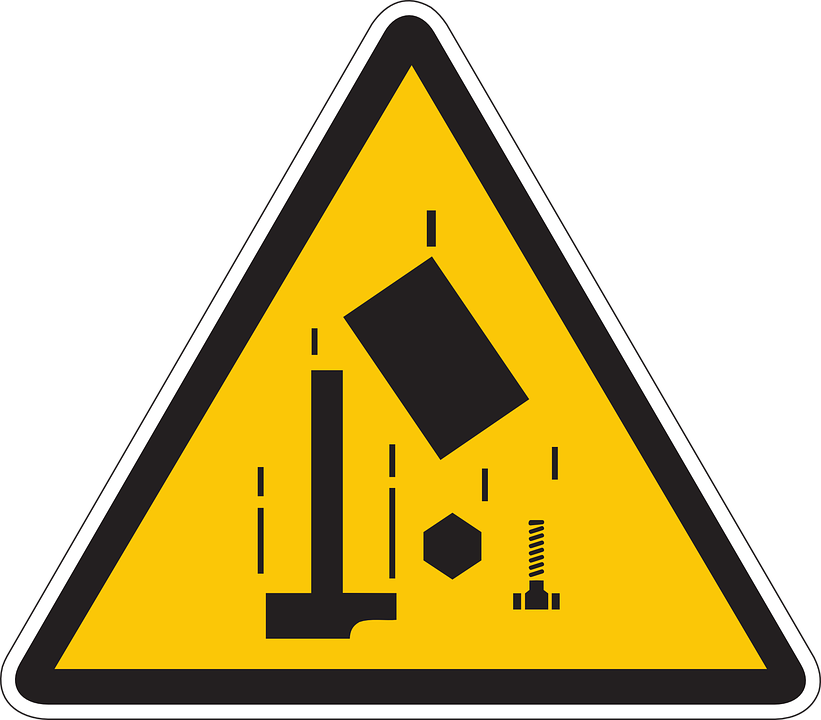Injuries from falling objects are one of the most common hazards encountered in construction. They are also one of the easiest to avoid. Falling objects can range from small tools to larger items such as steel beams. Unfortunately, most contractors tend to belittle the dangers caused by falling objects, believing that a small object could not cause serious injury.
Injuries caused by falling objects range from relatively minor ones such as bruises and lacerations to more severe injuries such as concussions, back and neck injuries, and broken bones. At worse, these incidents can result in paralysis, traumatic brain injuries, permanent disabilities, and death.
According to the Bureau of Labor Statistics, there are about 50,000 “struck by falling object” incidents recorded by OSHA every year. This means that there is approximately one injury from this cause every ten minutes. And there are probably many more incidents that go unreported.
One example of a fatality caused by falling objects involves the death of 58-year-old Gary Anderson in New Jersey. Anderson was delivering plasterboard to the site of a luxury high rise under construction when a tape measure struck him.
The tape measure had slipped from the belt of a worker working 50 stories above Anderson. It bounced off a piece of equipment ten feet above the ground before hitting him and knocking him unconscious. He suffered a cardiac arrest and later expired in a hospital.
While these incidents are fortunately rare, they serve to highlight how potentially dangerous falling objects at construction sites can be. They can also be easily prevented with some simple precautions being taken.

Prevent injuries from falling objects
There is a number of basic measures that workplaces can implement to prevent injuries from falling objects. These include:
Tethers and tool lanyards. These will ensure that tools are securely attached to a worker’s tool belt or harness and prevent them from falling. Workers should always secure their tools while they are at the worksite.
Barricades. These should be set up on the perimeter of exclusion zones to prevent workers from entering. If barricades are not feasible, then overhead protective structures should be used.
Warning signs should also be placed around these areas. When workers see people wandering near these sites, they should also be instructed to give them verbal warnings.
Grating covers. Even placing a piece of non-slip plywood to cover an open grating can prevent tools from falling through it.
Toeboards. These are installed on guardrails and prevent dropped tools from falling to the level underneath. In addition, if you pile materials beside guardrails that are higher than 3.5-inches, place screening or plywood panels on the guardrails to prevent small debris from falling through them.
Carts with sides. These will help ensure that what is placed on them will not accidentally fall off. If you have to place a load on a cart that extends over its side, make sure to tie it down or otherwise secure it.
In addition, these best practices can be implemented in the workplace to avoid falling object accidents.
When hoisting, make sure that the operator does not swing, lower or lift over someone’s head. If the operator’s view is blocked, a spotter should assist him in avoiding accidents.
Tools and other equipment and materials should be kept away from the edges of elevated surfaces. Materials should always be stacked on a stable, flat surface.
Materials and equipment should be kept at least six feet away from the edge to avoid tipping. These should also be arranged so that they don’t slide or roll in the direction of an opening.
When working at a height where there is strong wind, always tie down or otherwise secure materials and equipment.
When removing something from a secured pile, make sure to re-secure the pile afterward.
Workers should maintain the cleanliness of their work areas. After a tool is used, it should be put away and not left lying around. Debris and other messes should be promptly cleaned up after work.
Anyone who is at a site where there is a risk of falling objects should wear hard hats and other protective equipment. If there are visitors, they should be accompanied by employees who will escort them and prevent them from entering potentially hazardous areas.






